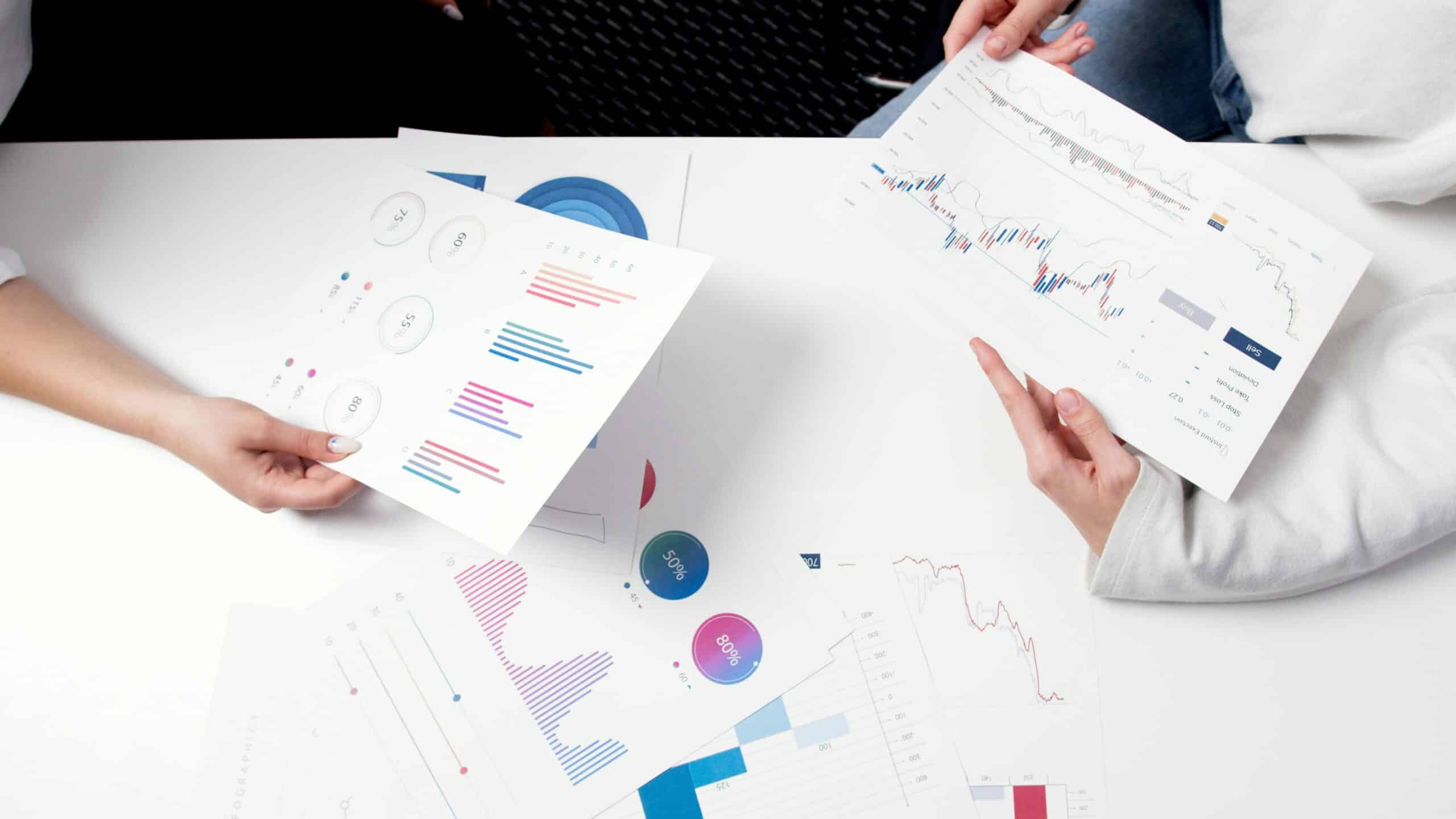Why are key performance indicators important in competitive analysis?
Key performance indicators (KPIs) are measurable variables that help companies to analyze the performance of their competitors and objectively evaluate their own performance at the same time.
They make it possible to structure complex data, measure progress and draw precise comparisons.
With the right KPIs, competitive advantages can be identified, opportunities exploited and potential risks recognized at an early stage.
This provides the company with the basis for targeted optimization and sustainable growth.
Important key metrics for the competitive analysis
1st key figure: Market share
The market share shows what percentage of a certain market a company controls.

It is a key indicator for understanding a company’s own position in comparison to its main competitors.
Companies with a larger market share often have cost advantages and a stronger negotiating position.
2nd key figure 2: Sales growth
This key figure measures the percentage change in sales over a certain period of time.
It provides information on how fast the company is growing compared to the competition.
Steady sales growth indicates a strong competitive advantage, while stagnating or declining sales can indicate weaknesses.
3rd key figure: Profit margins
The profit margin is the ratio of profit to sales and is a key indicator of a company’s financial health.
Companies with higher profit margins have greater financial leeway to invest in innovations or survive aggressive price wars.
4th key figure: Customer satisfaction
A qualitative indicator that is often measured through customer surveys or ratings.

A high level of customer satisfaction can indicate a strong market position, as satisfied customers are less likely to switch to the competition.
It also influences the long-term success of a company through recommendations and loyalty.
5th key figure: Brand awareness
This key figure measures how well-known a brand is among the target group.
It can be determined through surveys or online tracking data.
High brand awareness gives companies an advantage, as it is often associated with trust and willingness to buy.
6th key figure: Cost structure
Analyzing the cost structure of competitors is essential in order to understand how efficiently they work.

Companies with lower operating costs have more leeway in pricing and can react more flexibly to market changes.
7th key figure: Innovative strength
Another important indicator is innovative strength, measured by factors such as expenditure on research and development or the number of new product launches.
Companies that regularly drive innovation often remain more competitive and more adaptable to market changes.
8th key figure: Online presence and social media engagement
In the digital era, online presence metrics such as website traffic, social media followers or interaction rates are crucial to evaluate a company’s digital visibility compared to the competition.

A strong online presence increases reach and can become a decisive competitive advantage.
How are key figures used in competitive analysis?
Selecting and analyzing the right KPIs depends heavily on the industry, the company’s goals and the respective market dynamics.
A first step is to identify the most important competitors and compare their KPIs with your own values.
Companies should look for a combination of financial and non-financial KPIs to get a complete picture.
Once the KPIs have been collected, they should be monitored and evaluated regularly.
A snapshot alone is often not enough to make informed decisions.
It is important to observe trends and developments over time in order to assess the effectiveness of your own measures and make adjustments if necessary.
Conclusion
Key figures are an indispensable tool in competitive analysis.
They provide companies with an objective basis for comparing their own performance with that of the competition, identifying market opportunities and correcting weaknesses.
By regularly recording and evaluating key figures such as market share, sales growth or customer satisfaction, companies can adapt their strategy and secure a long-term competitive advantage.
In a world where data is the new gold, no competitive analysis should be without key figures.
More about competitor analysis
- Competitive analysis explained simply
- 7 Methods of competitive analysis
- The 6 steps to your own competitive analysis
- Competitor Analysis: 7 important criteria for evaluating the competition
- Competitive analysis in the context of marketing: Strategically understanding and utilizing the market
- Competitive analysis in HR marketing: Strategies for the best talent





